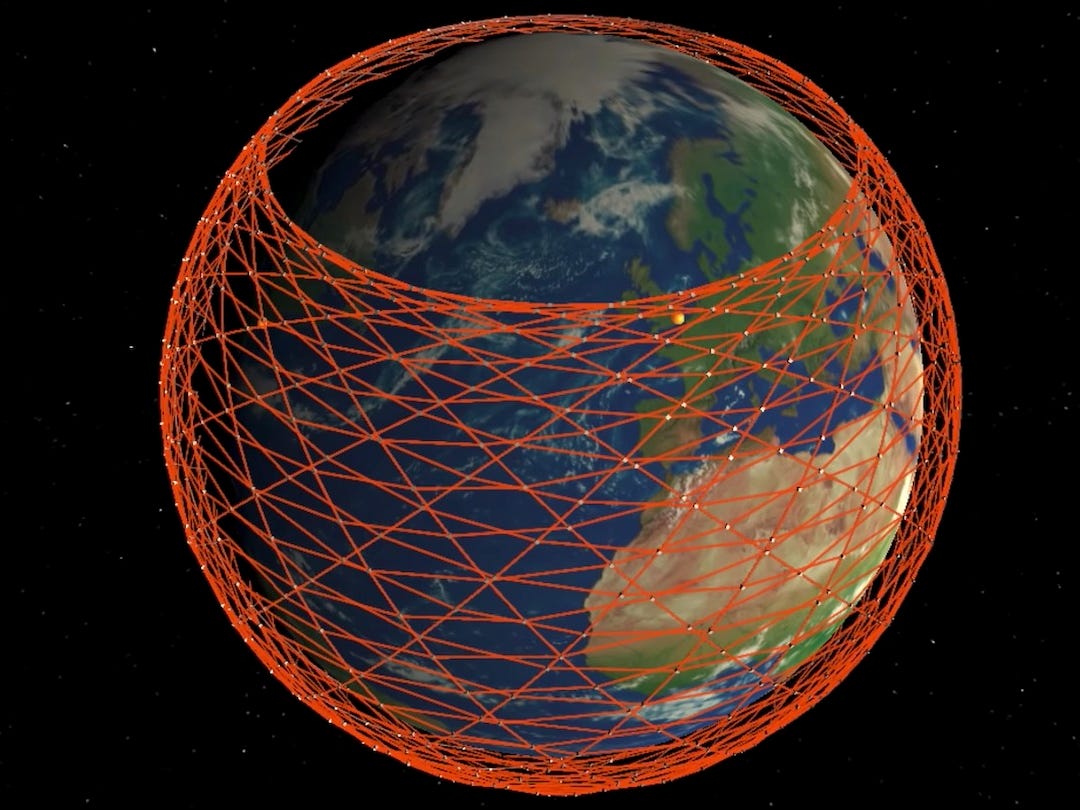In recent years, American based aerospace company SpaceX, founded by world-renowned entrepreneur Elon Musk in 2002, has become one of the leading companies in terms of manufacturing and launching reusable spacecrafts, that someday in the near future might empower humanity to explore new places in our solar system and beyond. While most people are familiar with SpaceX’s spacecraft program and mission to have humans ‘’going out there and being among the stars’’ (SpaceX, 2020), the aerospace company is also actively developing other technologies that could have a massive impact on people’s lives on earth. One of these new technologies is Starlink, which aims to develop a network of at least 12,000 satellites that can provide global high-speed internet coverage to almost anyone on earth as early as 2021 (Starlink, 2020). With this new internet infrastructure, SpaceX will be able to provide reliable and less expensive internet access to people in developing countries and remote areas where offering traditional internet infrastructure would be deemed economically unviable.
When the implementation of Starlink is successful, SpaceX will be able to compete with virtually any internet provider in the world within the next 5 years. This will lead to what might be the last large expansion of new internet users within the global internet marketplace, before internet will be abundantly available to anyone worldwide (Cashel, 2019). This provides a big opportunity to businesses to extend their customer base, or can provide new opportunities for emerging startups. Using Starlink, these companies might be able to ‘’leapfrog’’ certain technical innovations to people in developing countries, as we have seen with the emergence of mobile telephones in countries like Kenya and Nigeria (Pilling, 2018). These countries mostly skipped the utilization of traditional landlines due to high initial investment costs, and went straight to using cellular phone systems when they became available. Like mobile phones usage, a similar process is now happening to the internet.
Besides developing countries, Starlink might also facilitate technological innovations in developed countries. Starlink can for instance function as a base network for work wide connectivity of IoT devices, which might bring new innovations in a variety of industries such as manufacturing, healthcare, agriculture, and energy. It might also even open up certain markets that were previously unreachable for most businesses, such as in China and Russia that currently have firewalls in place that blocks access to a portion of foreign internet sites. While some governments might try to outlaw Starlink to keep its current grip over national internet use, it may very well be impossible to physically block access to Starlink’s services worldwide (Koetsier, 2020).
It remains to be seen how Starlink will shape our future internet access. Starlink’s goals are ambitious but, if proven to be successful, could further transform the world into an interconnected network of people and machines where internet access truly becomes available to anyone, anywhere, at any time. Existing companies should be aware that this technology is around the corner and should start exploring business expansion opportunities that Starlink might offer, but should also be aware of the threat of new market entrants that will utilize Starlink in their respective industry.
Sources
Cashel, J. (2019) How Businesses Should Prepare for Global Internet Access. [online] Harvard Business Review. Available at: https://hbr.org/2019/07/how-businesses-should-prepare-for-global-internet-access [Accessed: 6 October 2020].
Pilling, D. (2018) African economy: the limits of ‘leapfrogging’. [online] Financial Times. Available at: https://www-ft-com.eur.idm.oclc.org/content/052b0a34-9b1b-11e8-9702-5946bae86e6d [Accessed: 6 October 2020].
Koetsier, J. (2020) Elon Musk’s 42,000 StarLink Satellites Could Just Save The World. [online] Forbes. Available at: https://www.forbes.com/sites/johnkoetsier/2020/01/09/elon-musks-42000-starlink-satellites-could-just-save-the-world/#2a7a82834c2c [Accessed: 6 October 2020].
Starlink (n.d.) Starlink. [online] Available at: https://www.starlink.com/ [Accessed: 6 October 2020].
SpaceX (n.d.) SpaceX mission statement. [online] Available at: https://www.spacex.com/mission/ [Accessed: 6 October 2020].


I also interested about ‘StarLink’ program. Since most of developed countries already have their own internet cable so it cannot affect that much but rural areas can be still beneficial to this technology. What I think the most interested about the technology, if it is available to connect internet even in middle of sea, the data storage center can built with self-electricity-generation equipment.
The opportunity of having worldwide internet access is surely a very interesting thought. Especially, as the question, of whether or not, Internet-access should become a basic necessity like water and electricity which every human being should have access to, is raised more and more. The general implications are surely positive and can create way more than just the enormous economic value it has for Starlink. The huge problem is, that with this network, more or less all internet traffic and thus all data would flow through one institution. This would mean a company, which does not need to be transparent, would be able to monitor all humans on earth using this service. This sounds a bit like a 21st century version of Orwell’s 1984 of a dystopian world where everyone is monitored all the time. Thus, it might be interesting to tie the project to a globally accepted institution like the United Nations, which would ensure proper usage and transparency concerning the data. However, we all know how long it would take for all countries to come together and find an agreement concerning a topic that important and wicked.